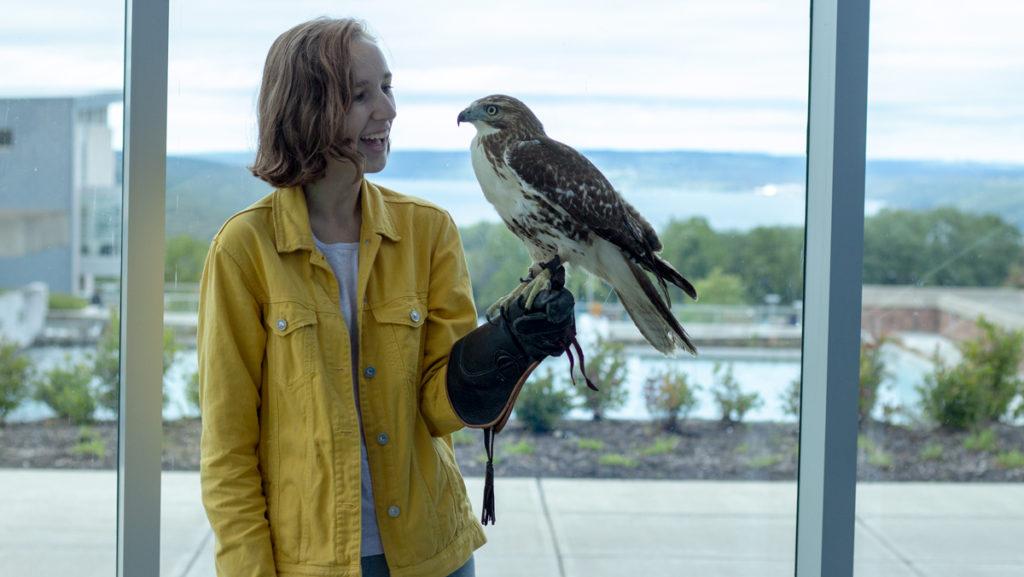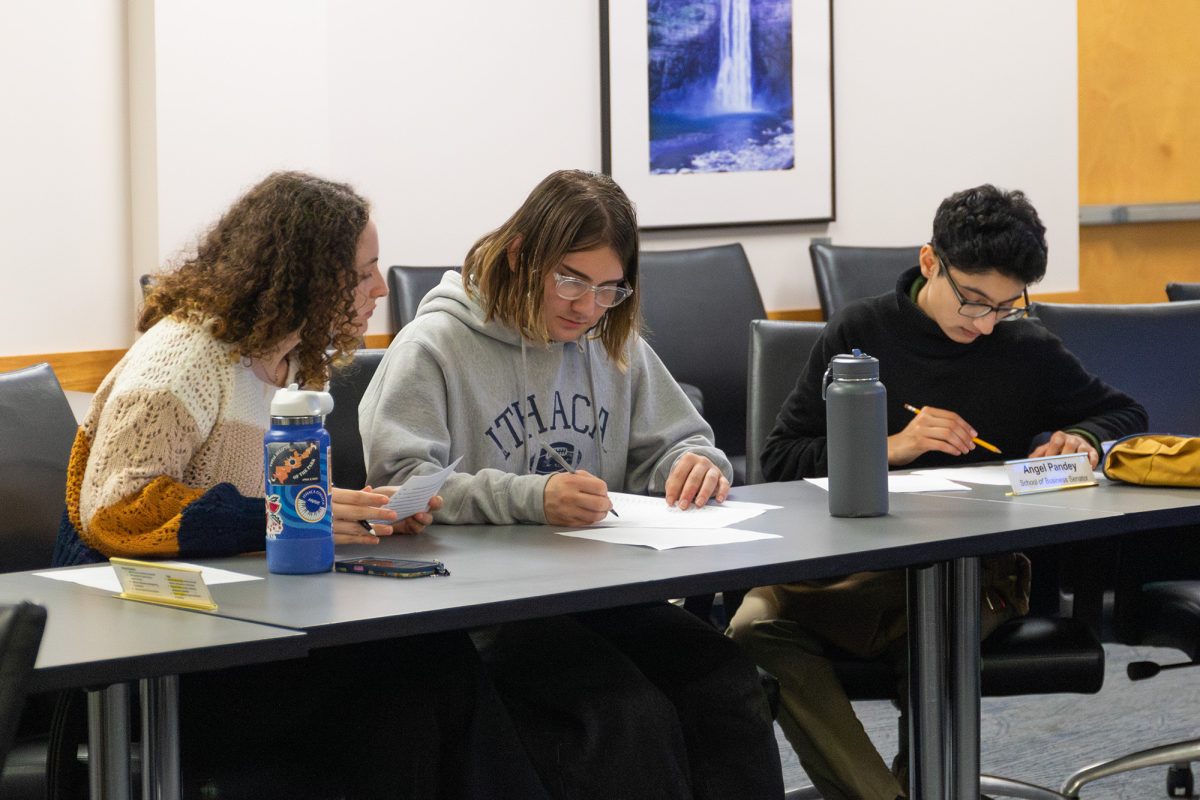As an incoming Ithaca College freshman, Ana Maria Arroyo looked forward to making connections with people who shared her passion for wildlife. But when she found that no wildlife-based organizations existed at the college, the environmental science major took the initiative to start her own.
Arroyo said the organization, tentatively called the IC Wildlife Club, will focus on teaching students about local wildlife. An Ithaca native, Arroyo grew up in the area and has worked closely with wildlife — she’s also a licensed wildlife rehabilitator.
“Some of the goals I had when I started this club were education and experience,” Arroyo said. “So giving people the opportunity to learn about animals, about wildlife, about the things that are around here, especially for the people who maybe come from the city … or for people whose parents never let them have pets and who are ready to learn more about wildlife.”
Freshman Emma Palmer expressed interest in joining the club because many of the local animals are new or unfamiliar to her.
“I’m from San Diego, so a lot of the animals here are animals I’m not used to seeing,” Palmer said. “I’ve never seen so many chipmunks before in my life.”
At age 16, Arroyo became a licensed wildlife rehabilitator. She has a Class I Rabies Vector Species rehabilitation license, meaning she is qualified to handle and care for animals like raccoons, skunks and bats. “Rabies vector species” refers to the animals most commonly found to carry and transmit rabies to humans and other animals.
Arroyo is also an amateur falconer and occasionally brings a juvenile red–tailed hawk named Gracie to campus to train during the day. Arroyo first started falconry at age 14 and has a New York State Apprentice Falconry License.
“She is not a pet bird,” Arroyo said. “She is a completely wild animal I am working with, and she will be released back into the wild this spring. I am currently training her to fly free so that I can take her hunting for small mammals and train her to be an educational animal.”
Above all, Arroyo said the goal is to help wildlife around campus with a specific focus on wildlife rehabilitation and the way the animals interact with the surrounding ecosystem. According to the National Wildlife Rehabilitators Association, wildlife rehabilitation is the process of providing veterinary care to sick and injured animals with the intention of returning them to the wild. Arroyo said many people do not understand the demand for rehabilitators in the area. When she first started getting involved with wildlife rehabilitation in high school, she was surprised by the volume of animals that needed help.
As a part of the club, Arroyo hopes to help others earn their wildlife rehabilitation licenses either through the New York State Department of Environmental Conservation or their home states’ equivalent. For her license in New York, Arroyo had to take a test and meet with a representative of the department for an interview.
In addition to the New York State Department of Environmental Conservation, Arroyo plans to reach out to the wildlife hospital at Cornell University, the Janet L. Swanson Wildlife Health Center and the Cayuga Nature Center so club members can gain more exposure to the treatment and study of local animals.
“The more I learned about it, the more I realized how much of a need this is for people,” Arroyo said. “You don’t realize when your cat catches a bird, you just take it to the vet or to the hospital, … and they do something with it. Where does it go? It goes to us, and there aren’t enough of us to help all the animals that get caught by cats and things.”
Arroyo first became interested in rehabilitation after watching a show about the Wildlife Aid Foundation in Surrey, England, on Netflix. From there, she contacted local rehabilitators to find out more about the process and how she could get involved. She was offered guidance by a retired rehabilitator near Ithaca.
“He wanted volunteers,” Arroyo said. “I went, and I helped him. I cleaned floor pans of raccoon cages for six months and learned what rehabilitation really was, and I decided I really wanted to do it.”
Freshman Amelia Bailey said she likes to spend time outside and said the club would be a good way to get outdoors and explore off campus more.
“I would join,” Bailey said. “It sounds interesting … I’m from Florida, so I don’t know anything about this place.”
Ultimately, Arroyo wants people to learn. From her high school experience, she knows there are many opportunities to learn from volunteering in the community.
“When I got here and I saw that there weren’t any clubs like this already, I was like, ‘well, I want to do this. I know there are other people who want to do this. What would it take to make it happen?’” Arroyo said.
According to the Office of Student Engagement, for a student organization to be recognized by the college, it must have at least 10 active members, an adviser, a constitution and at least four members of the executive board. The IC Wildlife Club is not yet officially recognized by the college, but Arroyo said she is in the process of writing a constitution and completing the recognition process online.
The advisor for the club will be Jason Hamilton, professor in the Department of Environmental Studies and Sciences. Arroyo is in one of Hamilton’s classes, and she initially went to him for help starting the organization. Hamilton said that, because they are still in the early stages of organizing the club, they are still trying to figure out what is possible for the organization to pursue within the scope of a college campus.
“My goal is just trying to figure out how to increase opportunities for whatever students are interested in,” Hamilton said. “If it turns out students are interested in wildlife rehabilitation, then I want to try to facilitate that in any way that I can.”








